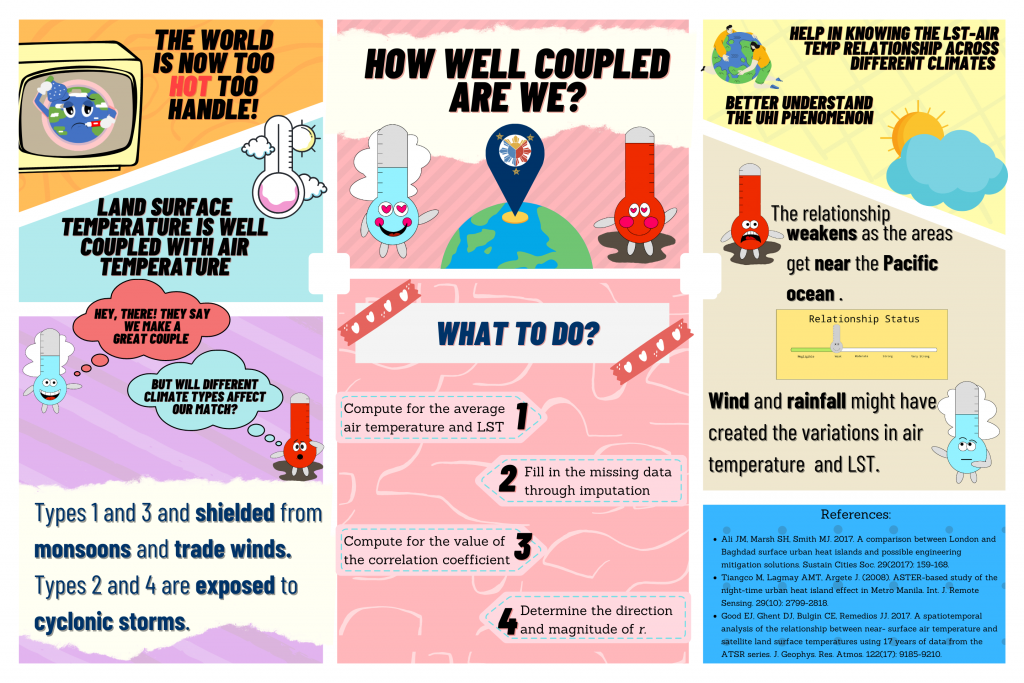The spatial relationship of air temperature and land surface temperature under the different climatic types in the Philippines from 2005 to 2019
JUAN PAOLO A. ALCALDE, ADA KOREEN V. BACAY, RHAYLEN KEA C. SITOY, and DAVID BRYAN C. LAO
Philippine Science High School Western Visayas Campus – Department of Science and Technology (DOST-PSHS WVC), Brgy. Bito-on, Jaro, Iloilo City 5000, Philippines
Abstract
The urban heat island (UHI) effect is characterized by the accumulation of heat due to anthropological activities. Land surface temperature (LST) and air temperature (Tair) are key parameters in quantifying UHI, and they are generally believed to be well-coupled. However, these two variables respond differently to various factors, such as solar insolation, atmospheric condition, and land surface properties. Climate is a critical factor that affects LST-Tair relationship. Thus, this study assessed the relationship between LST and Tair across the different climatic types in the Philippines from 2005 to 2019. The obtained LST-Tair relationship coefficients for the daytime observations are 0.68, 0.47, 0.59, and 0.53 for Types I, II, III, and IV, respectively. For the nighttime observations, the obtained LST-Tair relationship coefficients for Types I, II, III, and IV are 0.81, 0.39, 0.66, and 0.59, respectively. Thus, for both daytime and nighttime observations, the coefficient of LST and Tair relationship follows a decreasing trend as areas approach the east. This implies that climatic properties such as rainfall, Northeast monsoon, and trade winds might have affected their relationship because of the sensitivity and variability in the response of LST to these factors relative to Tair.
Keywords: air temperature, climate types, land surface temperature, Philippines, relationship


